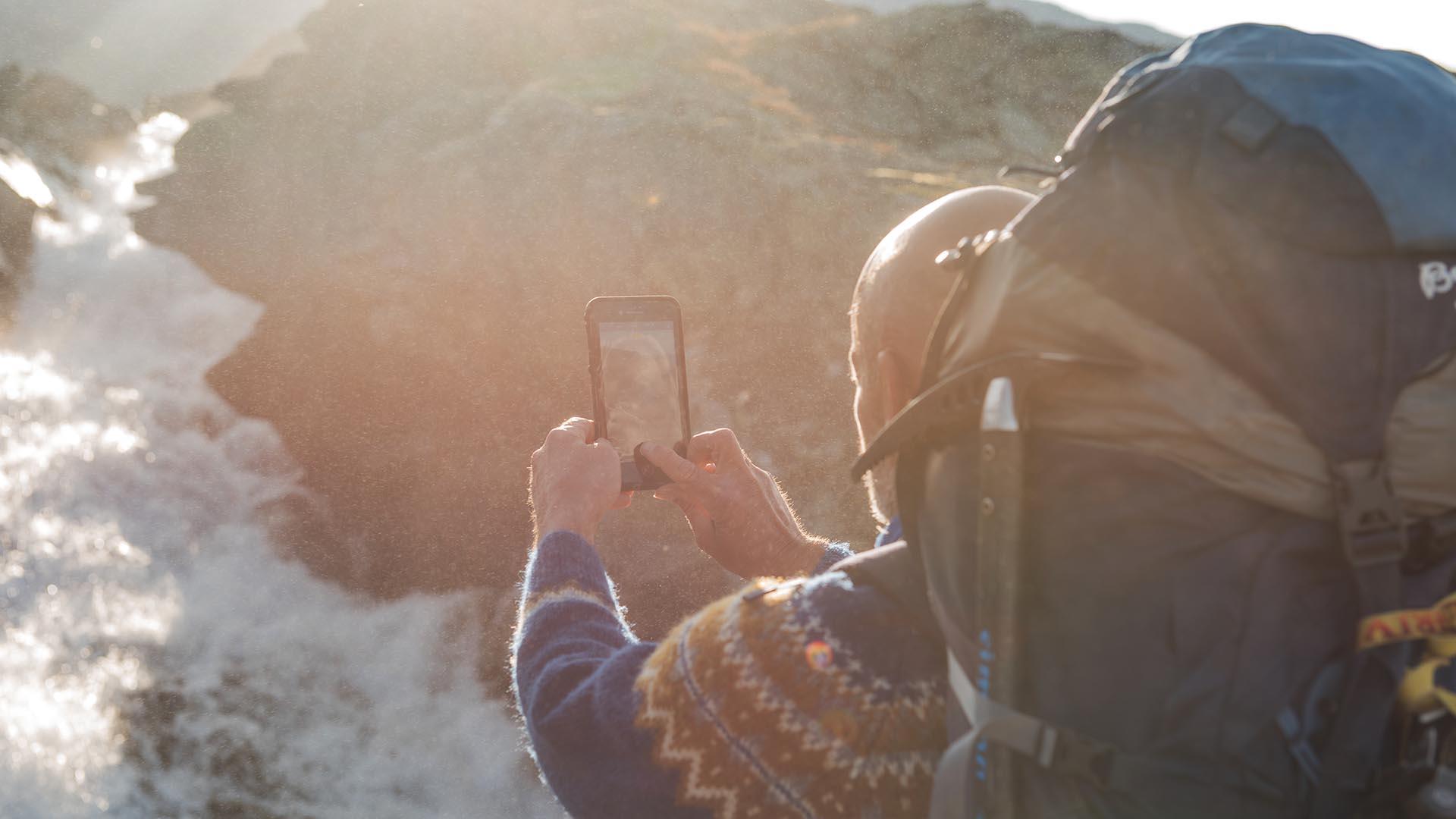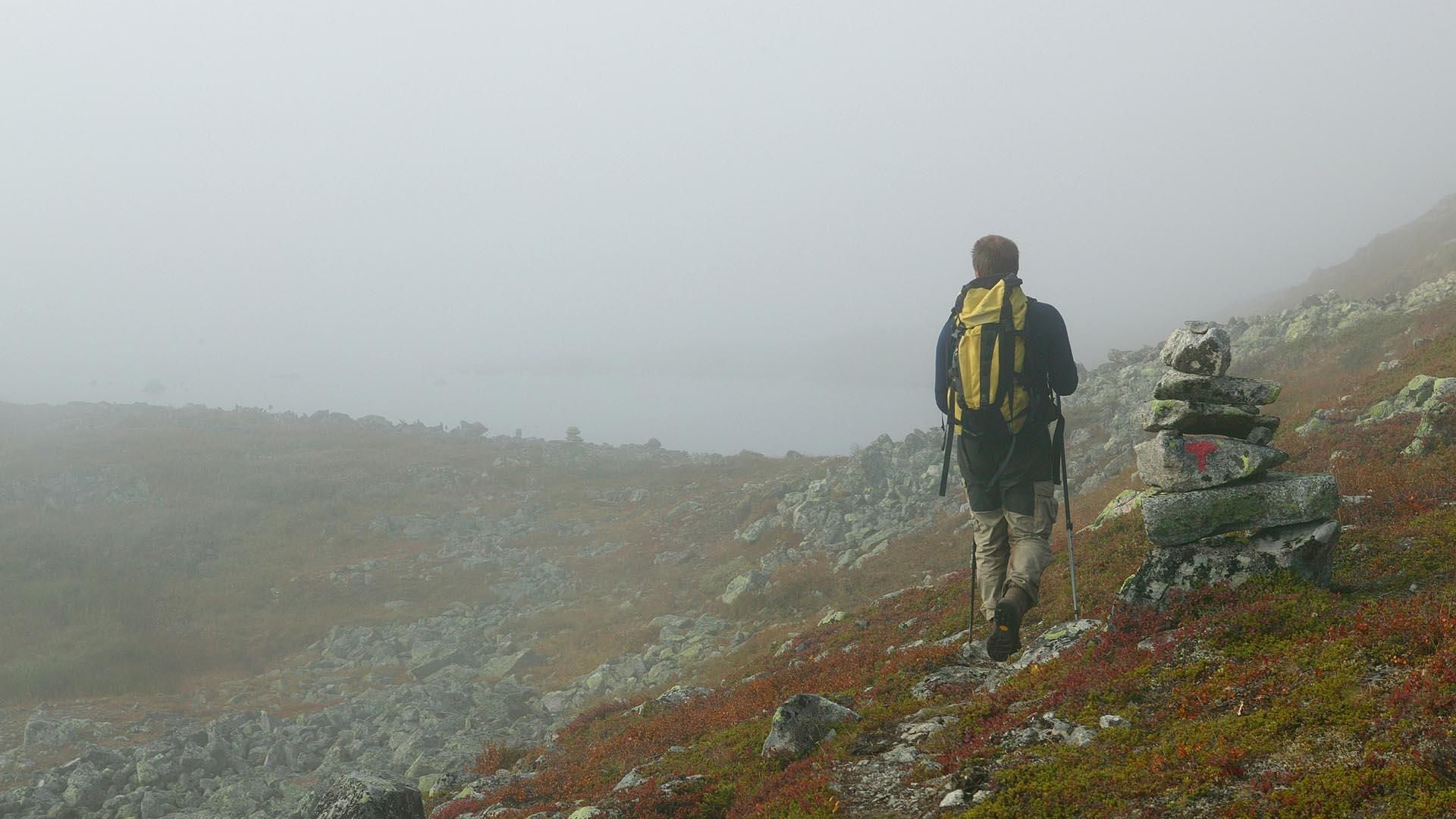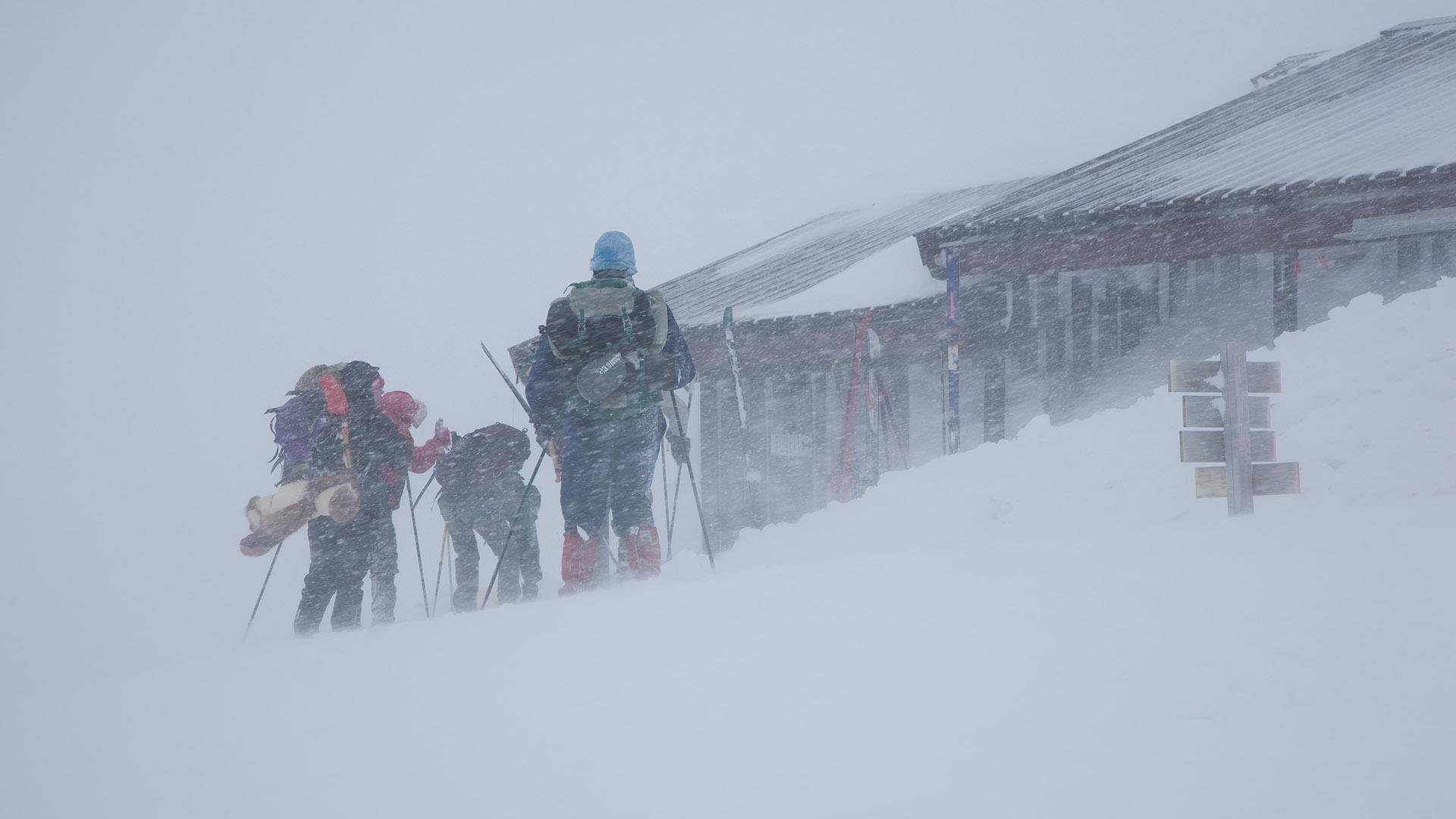Without doubt - the Norwegian mountains are wild and beautiful, all year round. But they can also be dangerous. Make sure that you have the fitness, experience, knowledge about the route and the equipment required for the planned trip.
Before setting out, leave a message to somebody about where you are heading, which route you plan to take and when you estimate to be back (and remember to check in with them again when you're back). Check the weather forecast – not just locally for the planned tour goal, but also regionally and past your planned trip in case you don't finish as planned, and keep in mind that the weather and the conditions can change very fast. Have a plan for what to do if the sight gets poor, if it gets dark or if the weather deteriorates. Would it be best to turn around or seek shelter? Is there a hut close by? Do you carry appropriate clothing for cold and wet weather and extra food and water? Would you last a night outside with precipitation, wind and zero degrees?
If you are heading into an unfamiliar area, be sure to carry a bivvuak sack or insulating blanket, insulating matrass, map, compass and mobile phone incl. an extra fully charged power bank. As a rule, the reception in the mountains is poor to non-existent, but you might be lucky when you need it the most, so don't leave the phone behind and make sure it's charged. You can't rely on it, though, and always need a map and compass as a backup.
Always follow the Norwegian mountain code
Sticking to the following rules will make your hike or ski tour safer.
- Plan well ahead and let someone know where you're going.
- Adjust the trip to your capability and the conditions.
- Respect the weather forecast and avalanche danger.
- Be prepared for bad weather and cold, even on short trips and in summer.
- Carry the necessary equipment to help yourself and others.
- Make safe route choices. Be sure to recognize unsafe ice and avalanche prone terrain.
- Be sure to use a map and compass and know always where you are.
- Turn around in good time - there's no shame in turning around!
- Don't exhaust yourself and, if necessary, seek shelter in good time. If you start to suffer from hypothermia your decision making and skills to take action will already be impaired.
Winter precautions in the Norwegian mountains
Most of the safety precautions for the summer season are also valid on winter trips, to an even larger degree. In cold weather, staying warm and dry is even more essential. Dress in wool from top to toe, carry a dry shift and wear a windproof outer shell.
Keep warm and dry, and drink enough
During winter, hypothermia is the biggest threat. The best way to avoid that is to keep warm and dry. If you need to spend the night outside, make sure to safe energy to dig yourself a snow shelter or build a wind shield.
If you have to lay down, use an insulating layer towards the snow or ground in order to preserve body heat. Skis can be used for that, even if they are not comfortable. A large backpack may serve as a partial, provisional sleeping bag or wind shelter, and even a small backpack may keep your feet and legs out of the elements.
If you get thirsty, eat snow as long as it looks clean and fresh. It will cool you down to some degree, but in many cases dehydration is an even bigger threat than cooling down.
Shelter your eyes
Even in midwinter, wear sun glasses of good quality. Sunlight reflected by snow can make you snow blind and permanently damage your sight.
Show where you are and signal for help
If you have to dig yourself into the snow, put up your skis upright in a cross to make it easier for search parties to locate you from a distance.
Avoid avalanches
Avoid skiing on or underneath overhanging snow drifts, inclinations of more than 30 degrees, terrain traps and other avalanche prone terrain. Pay attention if there have been avalanches close by. Avalanches move much faster than you can ski. Keep clear of them! Remember to check the avalanche forecast in advance of your trip.
Summer precautions in the Norwegian mountains
Keep to marked hiking trails which are found on maps and follow the advice and information given on signs and information boards along the route. If you get lost, look for stone cairns. They are often raised along etablished trails in short distances from each other, for hikers to be able to see the next one from the one where you are standing.
Bring a flash light, (woolen) hat, mittens and an extra set of warm clothing on all longer hikes in the mountains. Also, a reflecting vest takes up little space but might come in handy in an emergency situation as it will make you easier to spot for search teams.
In the mountains, the weather can change quickly and sudden temperature drops can occur. In such a case, it may be vital to have the right clothing on you and in the backpack. Make sure that you are prepared for any weather change and protect yourself against the sun.
Dress warmly
A wind proof jacket is essential. The same goes for woolen underwear, even on warm summer days. The wind in the mountains can be surprisingly cold and in contrary to nylon or cotton, wool will keep you insulated and warm even if moist or wet. Dressed in layers you comfortably can adjust your clothing to the temperatures and your body heat as you walk by adding or taking off a layer.
Drink enough water
If you get lost, conserve energy and drink enough. The sun, wind and exhausting physical activity can dehydrate you even if you don't feel thirsty. Most of running water from streams in the Norwegian mountains is safe to drink, but avoid water from mountain pastures and glaciers as it may contain harmful microorganisms.
Keep a distance to wildlife
Some of our incredible wildlife can be dangerous and should be left alone. Brown bears and moose are both way faster than you, and can hurt or even kill you if they get scared, surprised by the encounter or have young to defend and protect.
Move downwards in the terrain
If you need help, move towards lower elevations where settlements are more common. If possible, follow streams and rivers downstream; people often live on river banks and in valleys.
Glaciers
Never enter a glacier alone even if you're an experienced mountain hiker. If you need or want to cross a glacier, rope up with others and use a certified glacier guide.
Mobile coverage
In the mountains, mobile reception is poor or non-existant. Here you find maps over coverage of Norway's two largest operators:
Norsk Luftambulanse has develloped an emergency call-app - the 113-app. Download it to your phone before you venture into the mountains and call for hjelp from the app. Your position will be automatically forwarded to the rescue service.
OPEN FIRE AND WILDFIRE DANGER
During the period from 15. April and 15. September open fires in vegetated areas are prohibited.
You may light a fire on the sea shore or other areas in the direct vicinity of water where there is low danger of starting a wild fire, but not on naked rock.
In times of extreme draught the use of one-time-barbecues, charcoal or camping stoves (gas, gasoline or spirit) are prohibited.
If you make a fire you are personally and legally responible to avoid spreading and to extinguish it completely.
In case of a fire, call the firefighters on the emergency number 110. Try to extinguish it yourself, but don't put yourself in danger.
Check the fire danger on yr.no.
Source: Visit Norway










Follow us on Facebook
Follow us on Instagram